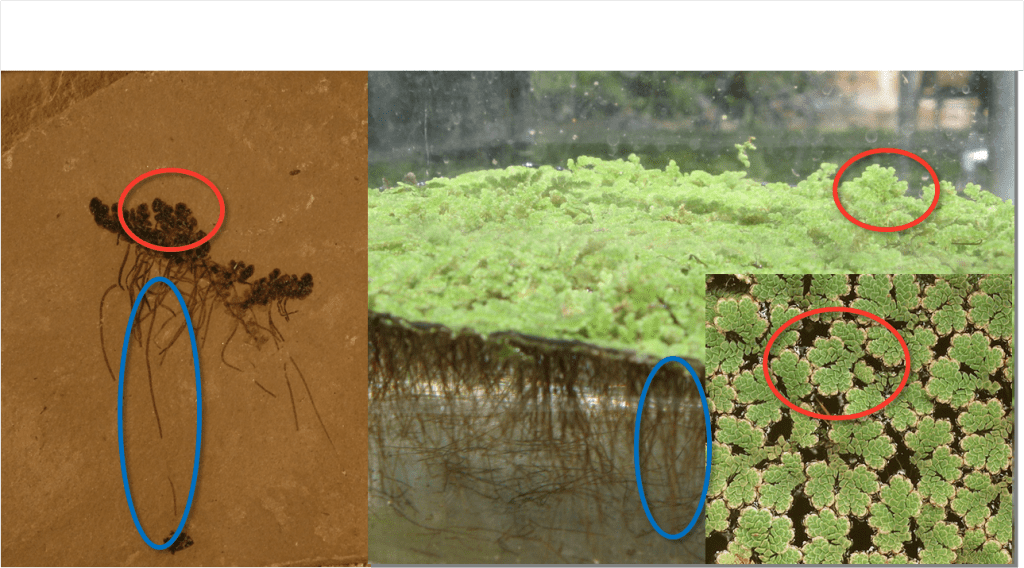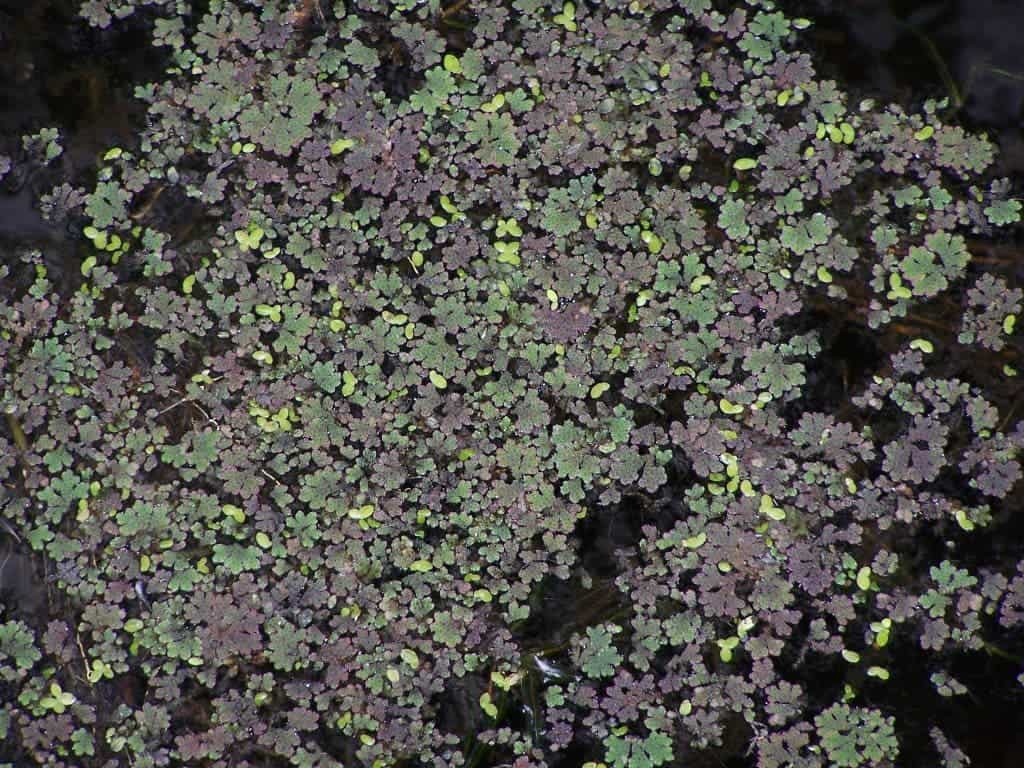Some 50 million years ago, the world was in dire straits. Atmospheric CO2 levels were at over 1000 ppm, with some putting the level at 3500 ppm. Turtles and palm trees were thriving at the poles and sea levels were much higher than they were now as there was virtually no snow to be seen. Future for all life seemed bleak because even though this change took place in millions of years, species find it difficult to adapt. But almost out of nowhere, a fern came into the spotlight and sucked the carbon dioxide out of the air, slowly creating the climate we see today on Earth. We call it the Azolla fern.
The Azolla Event

Following the demise of dinosaurs, the planet was characterized by enormous changes in the Earth’s climate. In the early Eocene, the planet was characterized by a greenhouse climate – more and more greenhouse gases were gathering in the atmosphere, and the temperatures were growing more and more. It’s estimated that average temperatures were about 12-15 degrees Celsius in the Arctic. Today, the average Arctic winter temperature is -30° F (-34°C), so that’s a huge difference. The remains of lush trees and even palm trees can be fund in sediments near the Arctic, as are fossils of reptiles which needed a warm climate to survive.
But geologists found something even more intriguing in the sediments: a thick layer of alternating plankton and Azolla fern, followed by no more lush trees and no more exotic creatures. Palynological analysis and calibration of magnetic pole reversal confirmed the find and its timing. A huge Azolla bloom reduced the carbon dioxide from the atmosphere to 650 ppm, reducing temperatures and setting the stage for the current icehouse Earth.

Still surviving today, Azolla is a remarkable plant, being able to suck as much as a tonne of nitrogen per acre per year (0.25 kg/m²/yr); this is matched by 6 tonnes per acre of carbon drawdown (1.5 kg/m²/yr). It grows quite fast, and if all the conditions are right, it can double its mass in two or three days. But the conditions had to be just right for the fern to work its magic.
The continental configuration was such that the Arctic Sea (now the Arctic Ocean) was almost completely isolated, cut off from the wider oceans. This meant that water mixing did not occur, leading to a stratified water column, much like what we see today in the Black Sea. Interestingly, these conditions led to the formation of a special layer of freshwater right above the seafloor – kind of like an underwater river. This freshwater layer allowed the Azolla to thrive, and the minerals on the bottom of the sea encouraged its growth – leading to a huge bloom. However, blooms alone are not alone – the carbon sucked by the plants also has to be sequestrated, and this is exactly what happened with the Azolla. They remained on the bottom of the sea, in an anoxic environment which meant there was no decomposition happening.

The ferns, along with all the carbon they captured, were buried and sealed away – this is the so-called Azolla event. The Azolla bloom episodes lasted a total of 800,000 years and covered about 4,000,000 km², out of Earth’s 510,072,000 km km².
Past Azolla, Present Azolla
Azolla still lives today. It’s a fern that floats freely on the surface of quiescent freshwater bodies, such as ponds, lakes and gently flowing rivers, and it’s still one of the fastest growing plants out there. But it has another unique capability, as Jonathan Bujak, who studies dust and fine plant particles as a palynologist explains:
“Azolla is unique because it is the only known plant in which a cyanobacterial symbiont is passed to successive generations during the plant’s reproduction. The fossil record indicates that the relationship between Azolla and A. azollae was established in the mid Cretaceous, so that the two organisms have been co-evolving for about 100 million years. This has resulted in their developing highly efficient and complementary biochemistry.”
After all, we’re talking about a plant that single handedly changed our planet – it sucked preposterous quantities of CO2 from the atmosphere.
“Around half of the CO2 available at the time,” Bujak said . “Levels dropped from between 2500 and 3500 [parts per million] to between 1500 and 1600 ppm.”*
It was a mere coincidence that the Arctic Sea was so isolated, and without this coincidence life on Earth would be unrecognizable. Without it, we wouldn’t have regular long-term cycles and ice ages. Even with it, it took 50 million years to reach some sort of balance. Yes, even with all this massive bloom and with all the right conditions, it took an incredibly long period of time to reach this climate that we now consider normal.
Now, in modern times, with carbon dioxide levels rising from 280 parts per million to approximately 400 ppm now, can the fern step in once again and help us save the day?

“What’s really incomprehensible,” Bujak said, “is that the previous process of our planet cooling and CO2 dropping took 50 million years to unfold. Now, we may be reversing this process in a matter of centuries.”
He believes that Azolla can help on many levels – from local farmers wanting to reduce their carbon footprint, to people who want to eat a healthy food – yes, he believes Azolla can be a superfood.
“Maybe you’re a small-time farmer in Alberta and you want to cut costs and leave less of a carbon footprint,” Bujak said. “Grow Azolla, and boom, you now have a valuable fertilizer, food source for livestock and something to eat yourself. “Even if we grew it as crops, it wouldn’t be wasting other cropland. It would simply be added to existing systems, such as it is now used in rich paddy crops,” Bujak said. “In conditions when space for food growth is extremely limited, Azolla offers a lot of nutrition for a small amount of space. They have even been working on its use in outer space!”
lan Marshall, a former radiologist living in Tasmania, Australia and a concerned citizen scientist also believes the answer is ‘yes’. After working as a radiologist and volunteering for two years in Africa, he is now experimenting with Azolla as part of a filter system and blogging about his project. He believes we can incorporate small scale and large scale production with great results. Currently Azolla is being grown alongside rice crops as fertilizer or livestock feed. Even though the CO2 isn’t really sequestrated because the plant isn’t buried, the net effect is still carbon positive – although by a much smaller margin.
Could It Really Work? – and a Warning
Conditions aren’t really similar to what they used to be – the Earth is not a greenhouse anymore, we have snow at the poles, and an overall better ocean circulation. But we can help this time – we can give nature a hand, and the first step is sequencing the fern’s genome. With this in mind, a team has started to map the genome of Azolla and Bujak is also working with the Beijing Genomics Institute. Quite soon, we may unravel the secrets of this plant.
“This knowledge will give us control over Azolla in a way we didn’t have before,” said Francisco Carrapico at the University of Lisbon. “We can increase carbon sequestering and nitrogen fixation, or give Azolla’s properties to other plants. We’ve even found chemicals in Azolla that stop cell division. The question is almost what will we find that Azolla cannot do.”
Of course, we would still need a global coordinated effort, huge growing areas, and of course, very large areas to grow it. But it is definitely worth inspecting and taking into consideration as a climate solution.
However, the story of the Azolla event also comes with a warning. All the carbon that it stored and sequestrated in the Arctic Ocean? It’s still there. In fact, whenever you hear someone talking about oil or coal in the Arctic, it’s probably Azolla deposits. If we take them out and burn them, then all the work unwittingly done by the fern will be undone and temperatures will once again surge. This is the warning we must heed.


